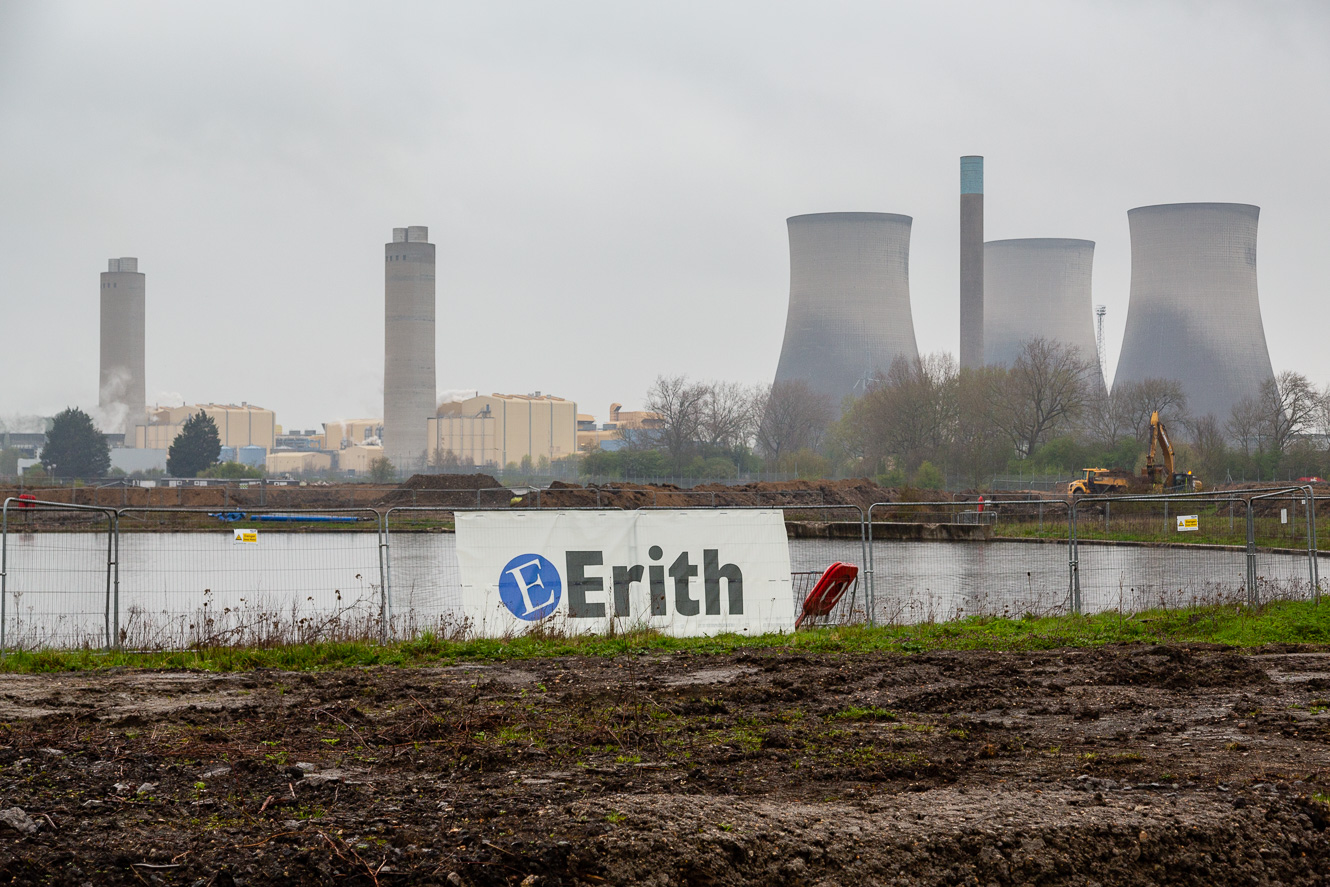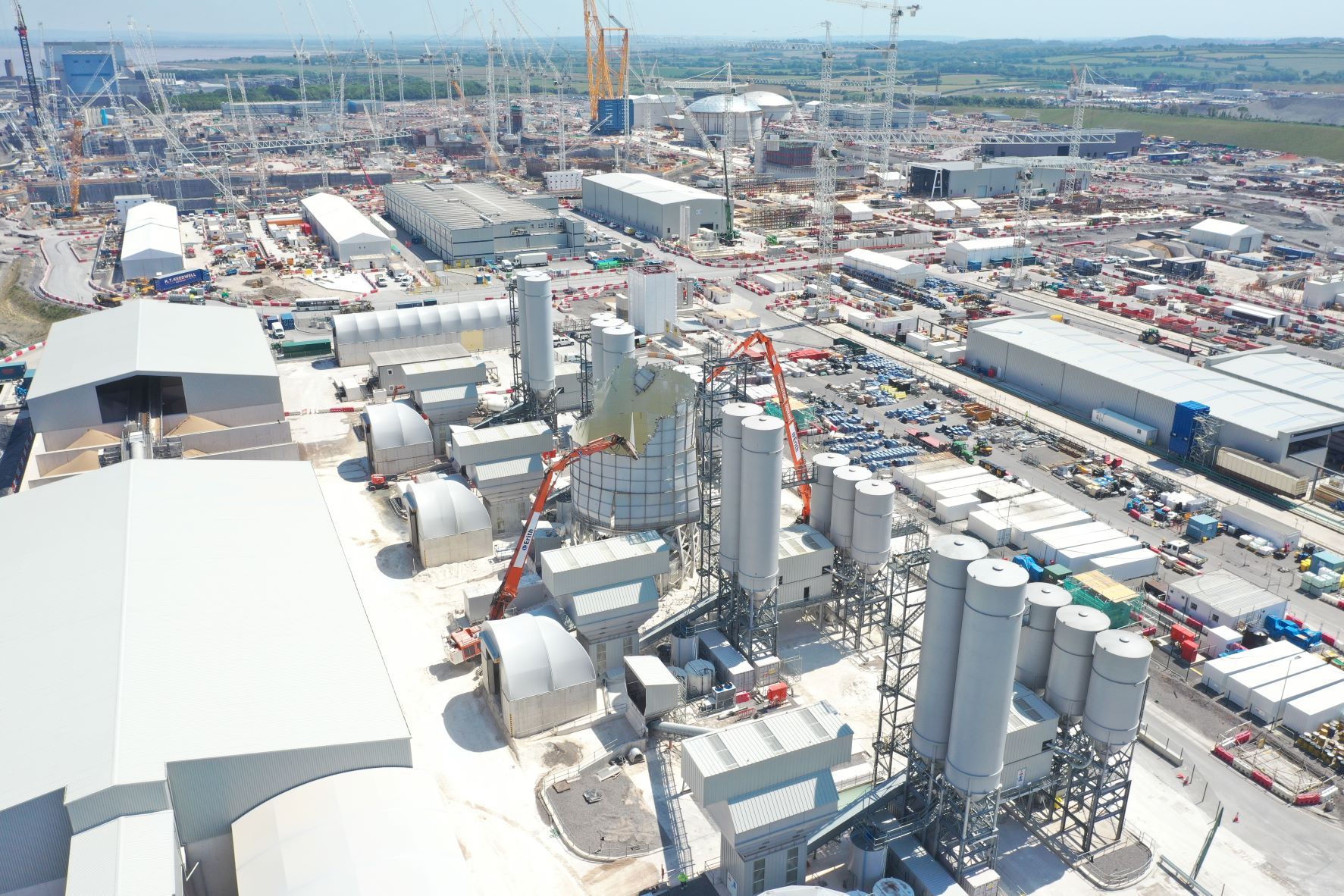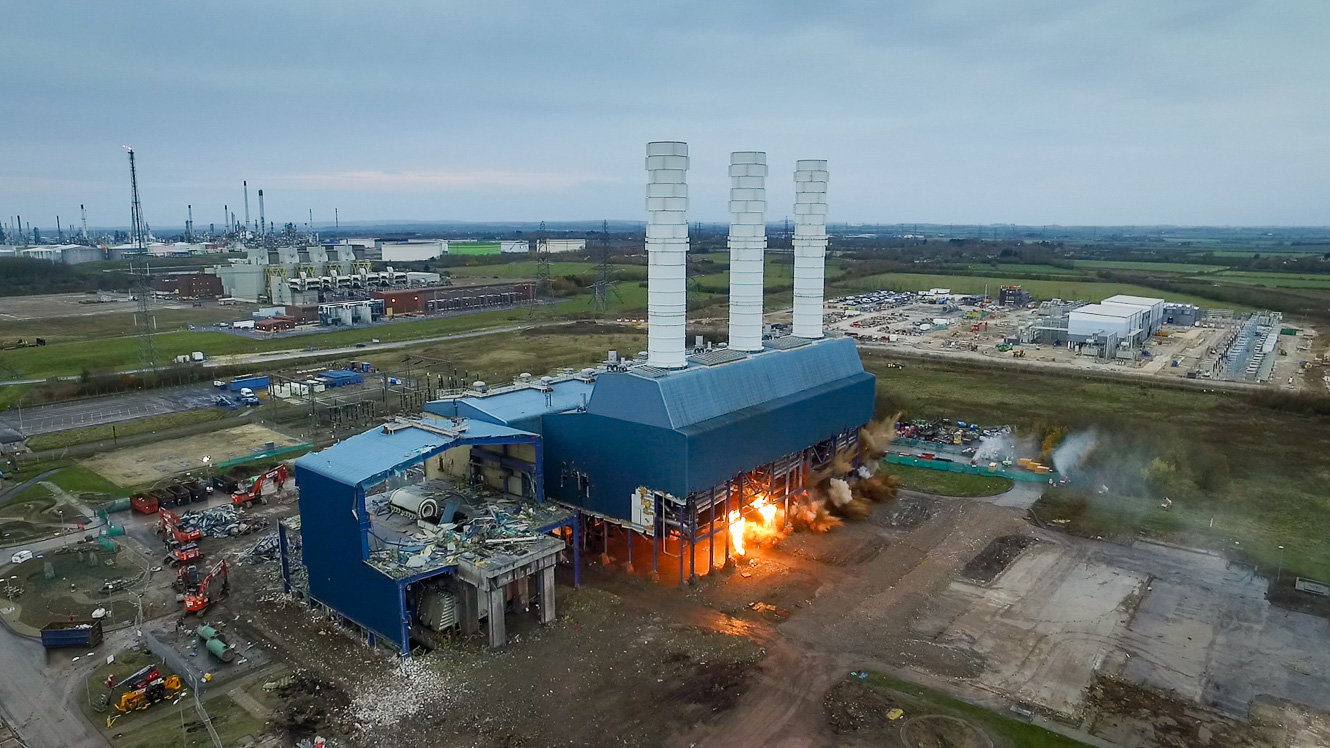With the bulk asbestos removal works to the turbine hall in full flow, the asbestos team was presented with a series of intricate challenges. One of the key challenges of this project was the terminal isolation and the asbestos abatement of the former turbine hall.
A crucial aspect was the mechanical isolation of the turbine’s steam tunnels – ensuring that the risks from any stored energy were managed safely. During this phase we completed the compliant removal of approximately 120 tonnes of asbestos waste.
As the project progressed to full ‘cold and dark’ status, enabling us to become principal contractor, it was a vital requirement to ensure the cranes could cope with our planned de-planting work. Utilising past power station experience, our site team meticulously planned and executed four proof load tests for each crane, with the crane tested to their SWL plus 10%. Each crane passed its inspections and proof load testing and were certified to be fit for purpose. The final crane required the use of 5nr 35t water bags, which proof loaded the main crane hook to 175t.
Heavy plant and equipment on the turbine roof were lifted and lowered with cranes in accordance with the Lifting Operations Lifting Equipment Regulations 1998 (LOLER) and BS7121 Code of practice for safe use of cranes. The de-planting of the feed annexe roof consisted of removing the former surge and reserve feedwater tanks. The tanks each weighed in the order of 35t and were located 32m above the ground floor level.
Due to advanced plant degradation, our teams initially surveyed and jacked the tanks to test their ability to withstand the forces created by lifting. With this satisfied, our in house heavy lifting team, utilising a Grove GMK6300L mobile crane and a Spierings SK598 self-erecting tower crane, removed the eight tank structures and supporting steelwork superstructure over seven weeks with all materials recycled as per waste stream.
Before every lift, the weight and position of the centre of gravity of the load were determined to ensure the correction selection of cranes with adequate lifting capacity. Before placing cranes, the precise proposed location(s) were established and existing ground conditions assessed by Swanton Consulting.
It was particularly important that any sub-structures (below ground) or services routes in and around the structures were documented within the risk assessment and safety plan. Where it was impossible or practical to backfill certain voids, these were clearly marked and isolated any site actively by barriers to be carefully maintained throughout the works. All heavy lifting works on site were managed in-house by our employees, i.e. planned by an appointed person, overseen by a lifting supervisor, executed by slingers/signallers.
Prior to de-planting the turbines, we re-energised the overhead gantry cranes, which were utilised to remove the internal plant. This included re-testing the cranes and all associated lifting tackle using a competent sub-contractor, whereby water-filled ballasts were used.
We created a lifting plan, and the safe working load was adhered to with hot\cold cutting techniques used to downsize the plant. Once the heavier components were lifted out of position, 360 degree demolition rigs with rotating shear attachments were utilised to down-size equipment.
We ensured that all scrap metal arisings (notably on the turbines containing high-grade metallics) were recovered and entered into the correct waste stream to ensure maximum commercial revenue. We also devised a mechanism in conjunction with Magnox to share scrap metal credit arisings.
All hot works were carried out by trained/experienced operators using oxy/ propane cutting equipment. Burning operatives carrying out hot works of this nature were issued with additional RPE/PPE, including airstream helmet systems, flame retardant overalls and leather gauntlet gloves. In addition, before any hot cutting was carried out, painted surfaces were tested for lead-based paint. If the paint contained lead, a risk assessment was carried out, and control measures were put in place to minimise the operatives exposure.
Operatives conducting hot works had blood lead testing carried out by a registered doctor, with re-testing carried out at regular intervals dependent upon previous results and the doctor’s guidance.
Following appraisal of the Turbine Hall, which identified the key structural members on which the stability of the structure relied upon, the precise demolition methodology and sequence was formulated in a safe system of work.
We decided that the safest means of dismantling the turbine hall was to utilise suitably sized high reach demolition machines fitted with sufficient long booms equipped with various rotating attachments. These were to be situated at remote and safe distances, eliminating the necessity for working at height. Operatives were on hand in support of the demolition, utilising hand tools and hot cutting techniques to process sections of the structure as necessary for demolition and on-site processing.
Another task was removing a high-level walkway spanning the internal site to access the road between the reactor and turbine hall. The link bridge was a steel structure containing a cable tunnel and walkway. The cable tunnel required a full asbestos environmental clean prior to de-planting.
The walkway section located above the cable tunnel was glass clad with asbestos rope beading. The span of the bridge was 25m, and once the cable tray was deplaned, the structure was lifted out whole utilising a 250t mobile crane and deconstructed at ground level.
With the removal of the turbine hall and outlying buildings delivered, Magnox awarded us the follow-on decommissioning phase. This phase involved working within the Radioactive Controlled Area (RCA) to undertake a major programme of bulk asbestos removal from items of pressure plant contained within boiler houses, boiler annexes, drum stores, top gas ducts, upper and lower gas ducts and foundation block areas.
We also carried out mechanical de-planting to the external façade of the reactor building to remove high-pressure steam mains and shield cooling inlet ductwork.
During the execution of the reactor buildings asbestos removal works, we worked collaboratively with Magnox and their appointed analytical consultant to overcome many engineering challenges associated with back propping of roof slabs, containing and removing stored energy in unstable spring hangars, mechanically supporting pipe assemblies and hot cutting of springs to remove stored energy – all within the controls of
asbestos regulation and compliance. All notifiable asbestos was removed by our fully licensed asbestos removal department under controlled conditions using qualified asbestos removal operatives.
Due to the scale of scaffolding required on the Dungeness site, we managed it in-house, employing scaffold labour direct and purchasing all the requisite apparatus. The scaffolding erected is commonly referred to as “ranch” scaffolding utilising the skeleton to form an enclosure with polythene and installing decks to accommodate negative pressure units.
Comprehensive design calculations and drawings were formulated before erection. All scaffolding was rigorously inspected before it was used for the first time and then every seven days until it was removed. It was also inspected each time it was exposed to conditions likely to cause deterioration, e.g. following adverse weather conditions or following substantial alteration. All scaffolding inspections were carried out by a competent person whose combination of knowledge, training and experience was appropriate for the type and complexity of the scaffold inspected.



